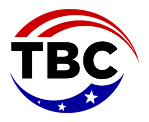Essential Steps for Federal Employees in the Final 1-3 Years Before Retirement
The Assistant2023-12-20T09:26:50-06:00As you approach the final years of your federal career, it’s akin to a runner gaining momentum when the finish line comes into view. The anticipation and excitement are palpable, but amidst this, caution is crucial. You’ve worked hard, and your retirement goals are within reach. However, don’t let the excitement distract you from the essential steps needed to ensure a seamless transition. If you’ve followed the career phases outlined earlier, you’re on the right track. Now, let’s explore the final steps that will help you lock in a successful retirement.
Know Your Numbers (KYN)
Begin by understanding your financial landscape. Early preparation is key, so work on your retirement budget and cash flow well before the retirement date. Consider trying it out a year or more in advance, living on your expected retirement income. Place any surplus cash in a savings account to test your financial resilience.
Cash Flow for the Transition
With the Office of Personnel Management (OPM) taking 2-9 months to process your retirement application, it’s crucial to have ample cash on hand. Partial retirement checks will be received during this period, and having enough cash prevents the need to withdraw from investments, especially in a market downturn.
Understand Your Medicare Decisions and Timelines
For those aged 65 or older at retirement, an 8-month window opens to enroll in Medicare Part B with no penalty. Research health insurance options reimbursing Medicare B premiums, and estimate potential premiums based on income. Planning ahead is vital for your healthcare during retirement.
Tax Planning
Taxes can be a significant retirement surprise. The transition from an employee to a retiree brings a new tax mindset. Consider consulting a tax advisor to evaluate your situation. Keep in mind important factors such as state taxes, TSP withdrawals, annual leave payouts, and the taxation of your pension and social security.
Pick Your Retirement Date and Understand Sick Leave
Strategically choosing your retirement date is crucial, with pension accrual starting the first day of the month following retirement. Account for accrued sick leave, converted to years and months of service, by using the 2087 chart to ensure you maximize this benefit.
Don’t Forget About COLA Rules
Under the FERS retirement system, no Cost of Living Adjustments (COLAs) are granted until age 62 if retiring before that age. Incorporate this information into your retirement budgeting and planning.
Gather Your Paperwork Early
Completing the retirement application forms (SF-3107 for FERS, SF-2801 for CSRS and CSRS Offset) is essential. Confirm your Retirement Service Comp date (RSCD) with HR, and gather supporting documentation for service time, including temporary or military service. Ensure all paperwork is in order, especially for divorced individuals with ex-spouses entitled to benefits.
Lock Down Your FEHB Coverage
Maintaining Federal Employees Health Benefits (FEHB) coverage post-retirement requires clear records of enrollment for the five full calendar years prior. Consider leaving a partial survivor benefit on your annuity for your spouse’s continued health insurance coverage.
Don’t Forget About FEGLI Life Insurance Options
Evaluate your life insurance options promptly. FEGLI life insurance can become expensive in retirement, and understanding available alternatives is crucial. Educate yourself to make informed decisions about your coverage after age 65.
Confirm Beneficiary Forms Are Complete
Verify that essential forms (SF2808 or SF3102, TSP 3, SF 2823) designating beneficiaries are complete. Overlooking this step can have significant implications for your estate planning.
Pay Attention to Healthcare Flexible Spending Accounts
Pre-retirement is the last opportunity to contribute to Healthcare Flexible Spending Accounts (FSAs). Ensure eligible expenses are incurred before retirement, as post-retirement services are not reimbursable. Submit reimbursement requests promptly.
Manage Your TSP Correctly
Effectively managing your Thrift Savings Plan (TSP) post-retirement is crucial. Education on withdrawal options, a well-thought-out spending strategy, and preparation for market downturns are essential. Seeking advice from financial advisors with federal benefits expertise is an investment worth considering.
Conclusion:
As you approach the finish line of your federal career, this comprehensive checklist aims to instill confidence that you’ve done everything possible for a great retirement. Utilize the resources available at The Benefit Coordinators to ensure you understand your benefits and make informed decisions. Wishing you the very best as you transition from employee to retiree, and thank you for your dedicated service to our government and country.



